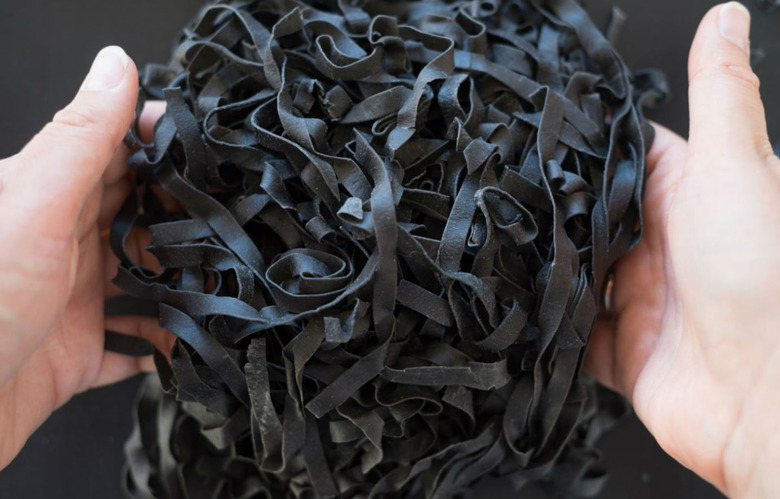Is Squid Ink The Next Big Health Food Trend?
Squid ink is one of the odder edible substances out there; it's a mysterious inky substance that squids shoot out to blind predators, and it's harvested directly from a sac between the gills. Almost all cephalopods have ink sacs; octopi have black ink, squid blue-black, and cuttlefish takes on a more brownish hue. But what exactly is this stuff, and is it good for you?
Squid ink is almost entirely made up of melanin, a pigment produced by the oxidation of an amino acid called tyrosine. It's what colors our skin and hair, but it also serves lots of other functions across the animal kingdom. It contains proteins, minerals, amino acids, lipids, and dopamine, the latter of which is a calming neurotransmitter.
While squid ink is primarily used as a coloring agent for pastas and risotto, it's also been found to contain a wide range of nutrients and antioxidants. A Chinese study found that it curbs cell activity in mice, meaning that it could be used to fight cancer; it's also been found to possess antibacterial properties against pathogens like E. coli and staph, and may protect white blood cell production in mice exposed to a certain chemotherapy drug.
With all that in mind, don't be afraid of this odd inky substance; it's definitely good for you!
